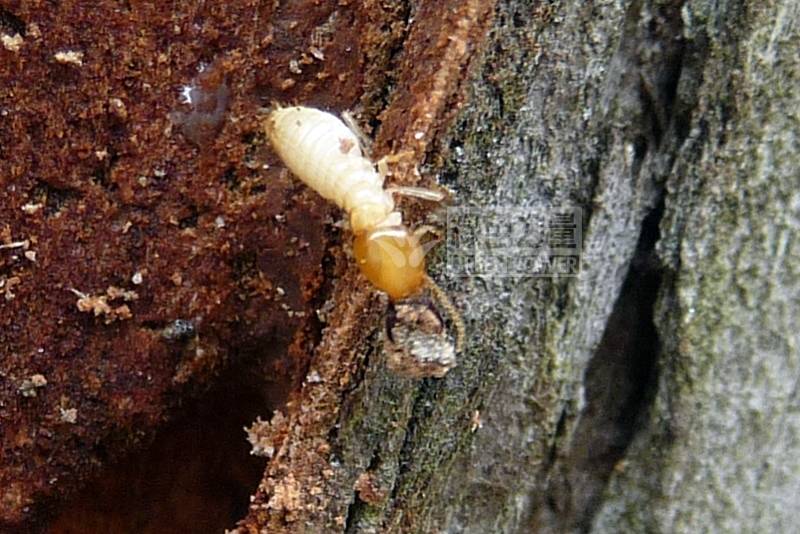


A nuisance many people face during hot and humid seasons, especially after rain, is these unwanted visitors in their homes - "flying ants". Many are aware that these are actually "termites" and see them as pests due to their ability to damage wooden furniture. However, they may not know that only a small number of termites are harmful to humans, while the majority are actually beneficial to the ecosystem. Studies have shown that in times of intensified dry spells due to climate change, termites play an important role in increasing soil moisture and promoting plant growth.
Globally, there are over 3,000 species of termites, with around 40 species found in Hong Kong. Termites bear a resemblance to ants, and like ants, they are social insects that live in colonies. Their thin exoskeleton and high water content in their bodies give them a milky-white appearance, hence they are generally referred to as "white ants". However, in taxonomy, termites are not closely related to ants; instead, they are more closely related to cockroaches. Previously, they were classified under a separate Order called Isoptera within the Class Insecta. However, they have now been reclassified and grouped under the same Order as cockroaches, which is Blattodea, specifically under Infraorder Isoptera.
Termites are eusocial insects with a rather complex caste system. In simple terms, they can be divided into the reproductive types, which include the termite king and queen, and the non-reproductive types, which consist of worker termites and soldier termites. The termite king and queen are fully matured adults with wings. They would dealate and pair, reproduce, and start the process of creating their own large colony. Worker termites make up over 90 percent of the entire colony. They are responsible for caring for the termite eggs, as well as performing tasks like cleaning, building, and repairing the nest. Soldier termites, which are larger in size, serve primarily as defenders against invaders like ants or other predators.

One of the most widely known traits of termites is their ability to construct intricate and structurally complex nests. These nests can be built within dry wood or tree trunks. Some termite species can even construct towering mounds several metres above the ground, while others build underground nests that can extend several meters in depth!

Digestive superpower
Termites are herbivorous insects, primarily relying on cellulose as their main source of nutrition. Their digestive system harbours a diverse array of protozoa, bacteria, and fungi, which secrete digestive enzymes to break down cellulose into simple sugars. These sugars are then utilised as nutrients and energy.
As termites feed on wood, once they enter human households, they can cause damage by infesting various wooden items. If a pair of winged adults successfully mate within the household, they can potentially give rise to a large colony and cause severe damage to home structures. In Hong Kong, the most common and destructive termite species found in households is the Formosan Termite (Coptotermes formosanus). The soldier termites of this species measure around 5 millimetres in length, and have pale orange bodies and pear-shaped heads with large, pointed mandibles.

Nutrient cycling
Despite their destructive capabilities, out of the over 3,000 termite species existing globally, only about 4% cause harm to humans. The majority not only pose no threat to us but they also play a crucial role in the ecosystem. Termites play an important role in the nutrient cycle. Their ability to digest cellulose accelerates the decomposition of organic matter in nature, releasing nutrients from plant tissues, which once again become available as nourishment for other organisms.
Additionally, termites that construct their nests underground create tunnels that enhance soil aeration and drainage. This improves the physical properties of soil, contributing to increased soil fertility and water retention capabilities. Termites also serve as a vital source of protein for numerous predatory animals.
In a joint study conducted by scholars from the University of Hong Kong and the United Kingdom in 2019, it was found that termites play a significant role in mitigating the adverse impacts of drought caused by climate change. During periods of drought, there is a higher termite population, which leads to increased capacities for leaf litter decomposition and nutrient enrichment, effectively enhancing soil moisture and promoting the growth of seedlings. This demonstrates the important role termites play in maintaining the balance and stability of the ecosystem.